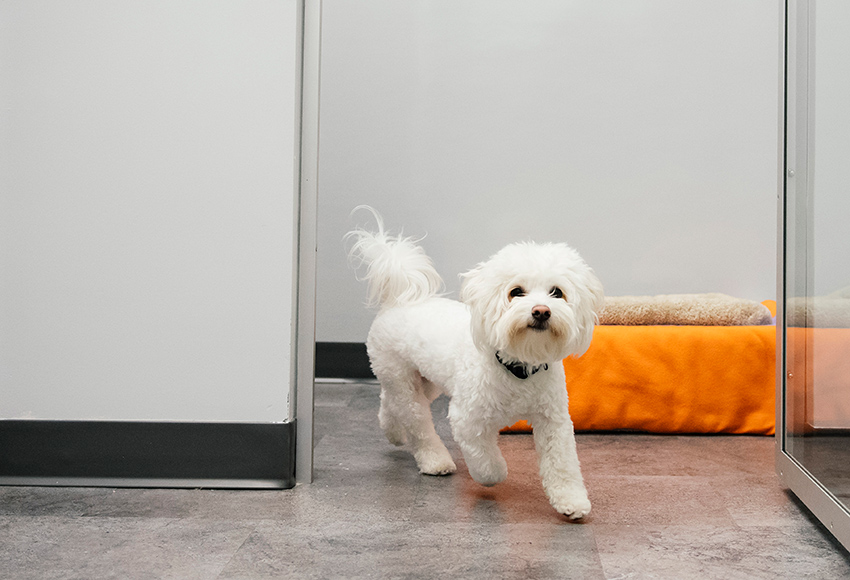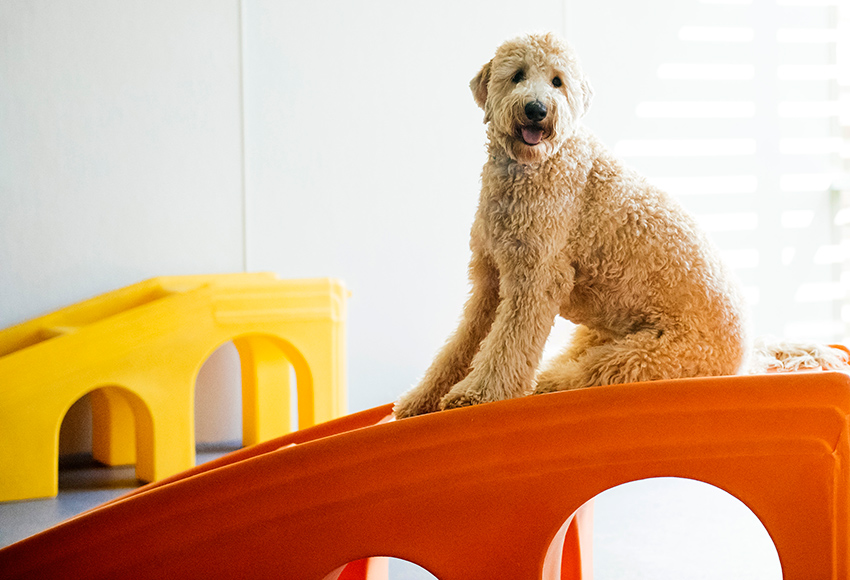November’s Article: What Your Dog’s Tail is Telling You
By Chelsea Kun
Many people assume that dogs simply wag their tails when they’re happy. While that’s partly true, there’s more to a dog’s tail than that.
Dogs can form many tail positions, and each position is related to their mood, whether it be happiness, sadness, anger, fearfulness, and more. When a dog experiences an emotion, other parts of their body display it as well.
You should also observe the situation in relation to your dog’s tail wagging. Did you just return home from a long day of work? Then your dog’s tail is most likely wagging from excitement. Is your dog’s tail wagging while barking at a squirrel that they see in the window? Then your pup is probably aroused and anxious.
There are many more ways a dog talks with their tail, so read ahead to find out!
High and stiff: tense, alert, and may show aggression

A stiff tail is something to always pay attention to (in fact, any stiffness in a dog’s body). It means your pup might be feeling tense and overly confident, especially in the presence of other dogs.
Observe some other body signals; does the pup have raised hackles (the fur in the middle of their back)? Are their ears raised and stiff? Are they giving “side-eye,” also known as a whale-eye? Do you hear growling or are they showing teeth? Is there a person or dog in the environment they aren’t fond of? If you answer “yes” to all or some of these questions, intervene immediately by redirecting your pup or removing them from the situation, as they may show aggression.
It is important to note that breeds with curled tails will naturally stick their tails up most of the time in a non-aggressive way, such as Shiba-Inus, Shih-Tzus, Pugs, Pomeranians, some Huskies, and more.
High and slightly wagging: confident

A raised tail almost always means confidence and alertness in a dog. With wagging, it could mean a number of things. Usually, this indicates the dog is aroused but confident, perhaps by another dog. A bow, hip nudge, or any other body signal that shows the pup wants to play may follow.
However, if your pup is interacting with another dog, you should still observe carefully and make sure the play doesn’t become too rough, as that confidence may turn into tension.
Sticking out: neutral mood or curious

When a dog’s tail is sticking outward at mid-height, they’re in a neutral mood, and this is usually paired with sniffing and exploring the environment they’re in. This signal may also mean your pup is curious about their surroundings. There’s usually nothing to be concerned about here, unless their body language changes suddenly.
Low or between legs: submissive and fearful

When a dog’s tail is low, that means they are cautious and concerned about their surroundings. If it is curled between their legs, they are very fearful and may show submission to other dogs and people in the environment, perhaps by flipping on their back or crouching down.
It is important to note that dogs do not always flip on their back when they are fearful, it simply means that they are being submissive. That submission may also come with trust depending on the situation, such as playing with another dog they know well or getting belly scratches from their favorite person.
Fear and submission in dogs is commonly paired, however. It is important to evaluate if your pup is in a situation that makes them scared. Raised hackles, pinned back ears, shivering, enlarged pupils, and even snarling or snapping are other signs of fearfulness.
Wagging in wide strokes: happy

This is the stereotypical happy tail wag that people know well, but there are different levels of happiness a dog can feel (like humans), hence different tail movements. When coming home from taking a quick trip to the grocery store or after a quick shower, you may notice your pup steadily wagging their tail and in wide strokes. This tail movement simply means they are happy about who and what they see in their surroundings.
Many dogs start to wag their tails this way when in a playful mood, and unlike the high tail position with slight wagging, this tail position indicates a more relaxed pup with neutral confidence.
When interacting with another dog, as long as the other dog is mirroring relaxed body language, this play interaction will most likely be positive. Still observe carefully, though!
Wagging very fast or whipping in circles: ecstatic

This is a prime example of different levels of happiness a dog exhibits. Sometimes dogs are happy, and other times they are ecstatic. One situation that brings out this amount of excitement in a dog is when they see a person they love after a long period of time; their family coming home from vacation is a great example of this. A fast wagging tail or circular motion might also be paired with jumping, kisses, whining, or wiggling their entire body.
Many Dogtopia pups do this when they come to daycare, because they can’t contain the excitement of going to play with their best friends!
Wagging in short strokes: anxious

Unlike a happy tail wag, which happens in wider strokes, a tail wagging in shorter strokes usually means the pup is anxious — in an aroused way and not exactly in a submissive way. Sometimes, if a dog is looking out the window and sees a squirrel or a new person, they may bark and wag their tail in short strokes.
Many dogs that are friendly with people but are unsure at first, may wag their tails in this way when meeting a new person. They may also approach cautiously, pace around the room, or paint excessively before becoming more comfortable.
Slow wagging: calm and non-enthusiastic

In general, the more aroused a dog is, the faster their tails wag. In contrast, the less aroused a dog is, the slower their tail wag. So, if your pup’s tail is at medium height and wagging very slowly, it just means that they are content, yet calm and unenthusiastic. Dogs may wag their tail this way after exercising, or in the presence of someone they have spent a long period of time with. They may also show other related signals, such as relaxed ears and body.
Wagging right vs. wagging left


Interestingly, recent studies show that dogs wag their tail in a certain direction depending on how they feel in the environment. The Chinese Academy of Sciences in Beijing conducted a study on tail wagging, which included 10 beagles and 21,000 observed tail wags.
They concluded that the direction the tail wag starts correlates with right and left brain activity. If it starts to the right, it means the dog feels positively about who and what is present in the environment. In contrast, tail wagging to the left means a dog is more nervous and concerned with the environment. Scientists in the study noticed that upon meeting, the dogs would start with a left tail-wag, and as they spent more time together, the direction of the tail wags would shift more to the right.
This is a great way of observing dog-on-dog interactions and knowing how comfortable your pup is with other dogs!






